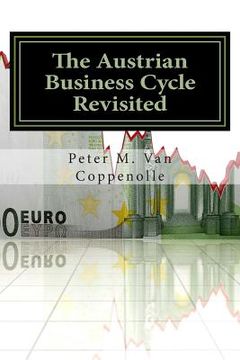Synopsis "The Austrian Business Cycle Revisited (in English)"
An academic exposé requiring some previous knowledge of mainstream and heterodox theory. The author relies heavily on the knowledge base of the New Austrian School of Economics (NASoE), led by Antal E. Fekete. In it, the author deals with epistemological issues of inflation and deflation and why they are not linear phenomena. The inflation issue is indeed an old sore that is hardly fathomed by people - academics or otherwise. Credit and credit expansion are at the core of the problem, according to Austrian theory. However, the author rejects this. Credit has always existed as a spontaneous social phenomenon, whether on a large scale such as described by Adam Smith on circulating bills or on a smaller scale in the form of bonds. Credit can be detached from lending or borrowing. From inflation it is only a small step to the topic of the Austrian Business Cycle Theory (ABCT). Mainstream ignores it existence, as it ignores the economic results of its own deeply flawed thinking, pointing fingers at 'overproduction' or 'underconsumption'. Neither is correct, no matter how many so-called scientist believe it. NASoE shows that the business cycle is missing some other explanations than 'unbridled credit expansion' as its source. Fractional Banking is usually seen as the underlying culprit. Even here, the Austrian Business Cycle Theory can be improved with a deeper understanding of complexity theory including emerging behaviour. Merchant bankers and capitalists have a pivotal role to play in any developed economic system. Under a gold standard, their role is to facilitate wealth and income exchanges between the other protagonists, the annuitand, annuitant, inventor and manager. Interest rates can only be understood properly when tied to a gold standard. Zero interest rates, which are another way of saying 100 % gold standard and no fractional banking nor any credit, would be tantamount to returning to the Dark Ages. And than there is the thoroughly misunderstood discount rate. Discount has its source in people's propensity to consume. Interest has its source in people's propensity to save. Mainstream economists have succeeded in equating discount with interest. The results are painfully visible. However, the people will prevail. The gold standard is widely disparaged by mainstream economists. But under a gold standard, the working of which cannot be understood without the heterodox insights of NASoE, led by Professor A.E.Fekete there is hope after all.

